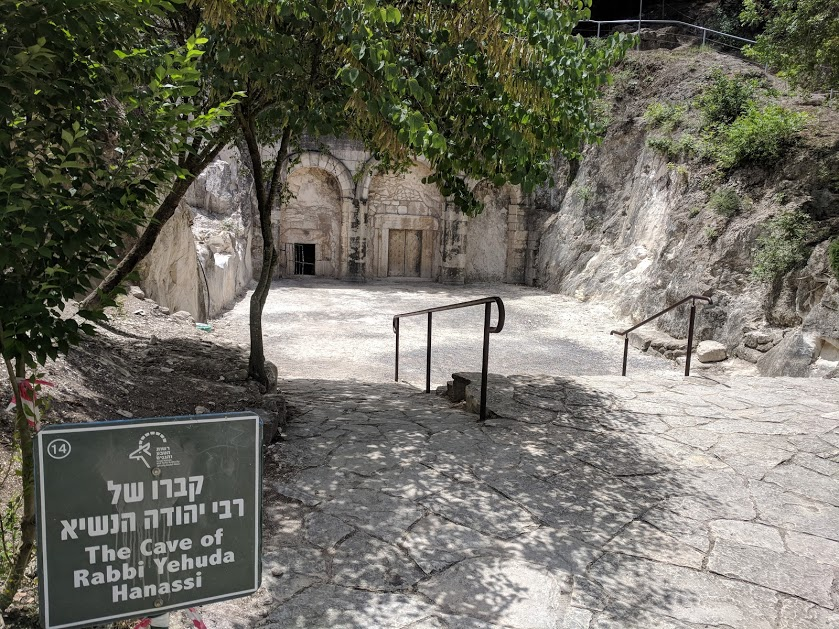Today we went to Bet She’arim and climbed around the tombs of the deceased. Bet She’arim is an archeological site located just north of the slopes of Mount Carmel and south of the mountains of Galilee.
 |
| Tomb complex at Beit She'arim |
Bernice, the daughter of King Agrippa I found the area so beautiful that she built an estate at Bet She’arim (called Besara in the life of Josephus) for her personal use. The land was filled with grain fields and also some orchards.
 |
| Pomegranates, Olives and fields of Grain |
The wealth and beauty of the area drew the Sanhedrin move to this location for a period of time after the Temple in Jerusalem was destroyed (The court of 70 moved from Yavneh to Usha, Shefar’am, Bet She’arim, Sipporis, and finally to Tiberias).
 |
| The tomb of Rabbi Hanassi |
Rabbi Yehuda Hanasi established a school in Bet She’arim. Although this great rabbi and the compiler of the mishnah moved to Tiberias after seventeen years,.he chose to be buried in a cave at Beit She'arim.
 |
| A Decorative Menorah in the Tombs |
Many people from around the world greatly respected Rabbi Yehuda Hanasi for his teachings, and desired to be buried close to his tomb.
 |
| One of the Tomb Complexes |
The Talmud says, “Whoever is buried in the Land of Israel is deemed to be buried under the altar.” Some believed people buried elsewhere would need to roll underground all the way to Israel at the time of the great resurrection.
 |
| Cave of the Torah Ark |
The tombs at Beit She'arim contain important people from Israel and beyond. People from Antioch, Palmyra, Byblos, Beirut, Sidon, Tyre, Yahmur, Phaena, Arabia, Caesarea, Himyar, and Etsion Gaber were buried at this site.
 |
| Grave of Rabbi Gamliel |
Large complexes of caves were built under the hills at Beit She'arim during the first three centuries of the Common Era. Some people were buried in wooden coffins, some in stone containers, some laid on limestone and placed into ossuaries. There are many inscriptions over niches in the caves written in Hebrew, Aramaic and Greek.
 |
| Photographer of the Tombs |
One inscription reads: “I, Justus, son of Leontius and Sappho, lie here dead / And after I had plucked the fruit of all wisdom / I left the light, the miserable parents, who mourn ceaselessly / and my brothers. Woe to me in Besara. / After descending to Hades, I Justus, lie here / with many of my people, for so willed stern fate. / Be comforted, Justus, no man is immortal.



No comments:
Post a Comment